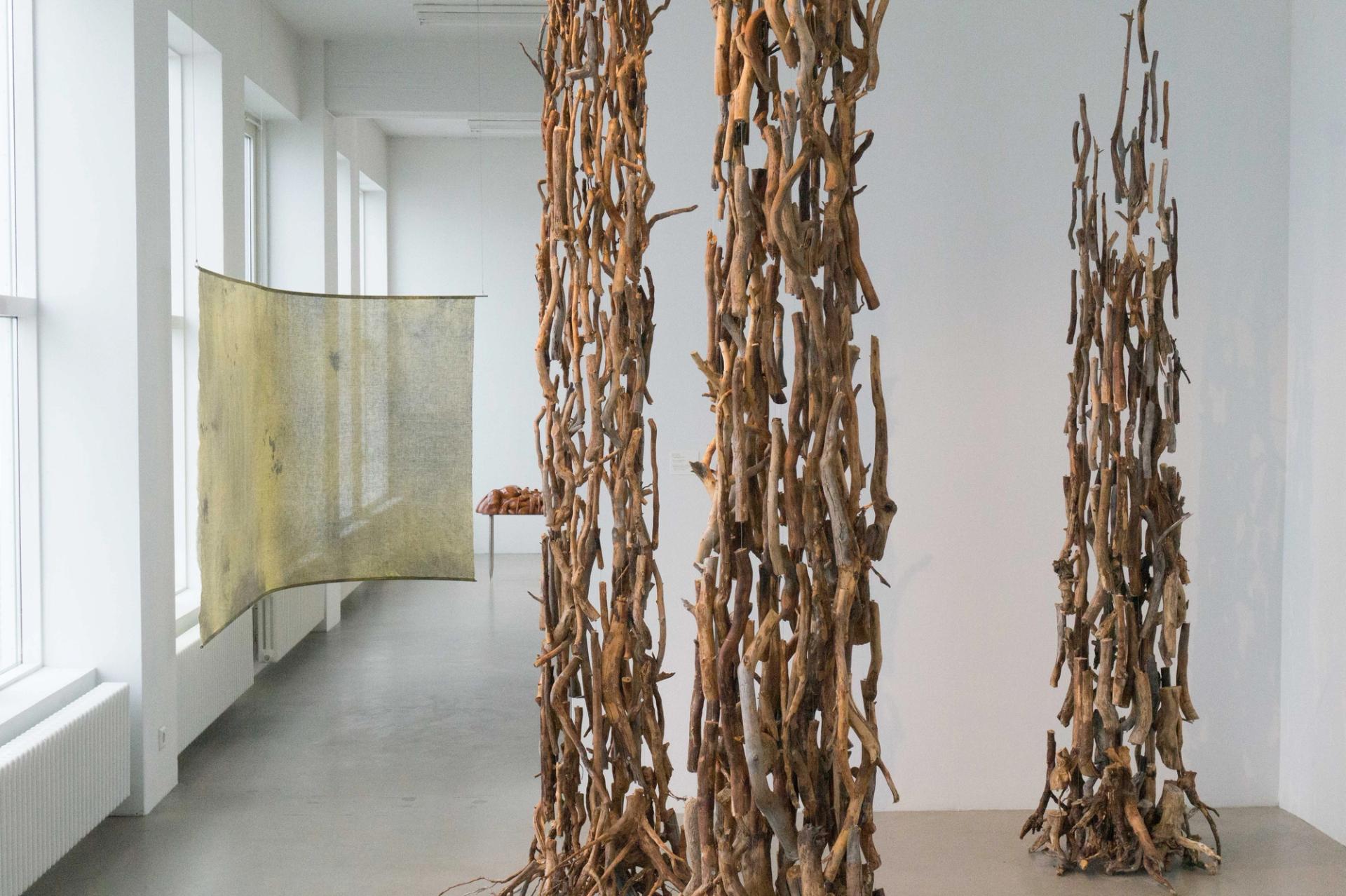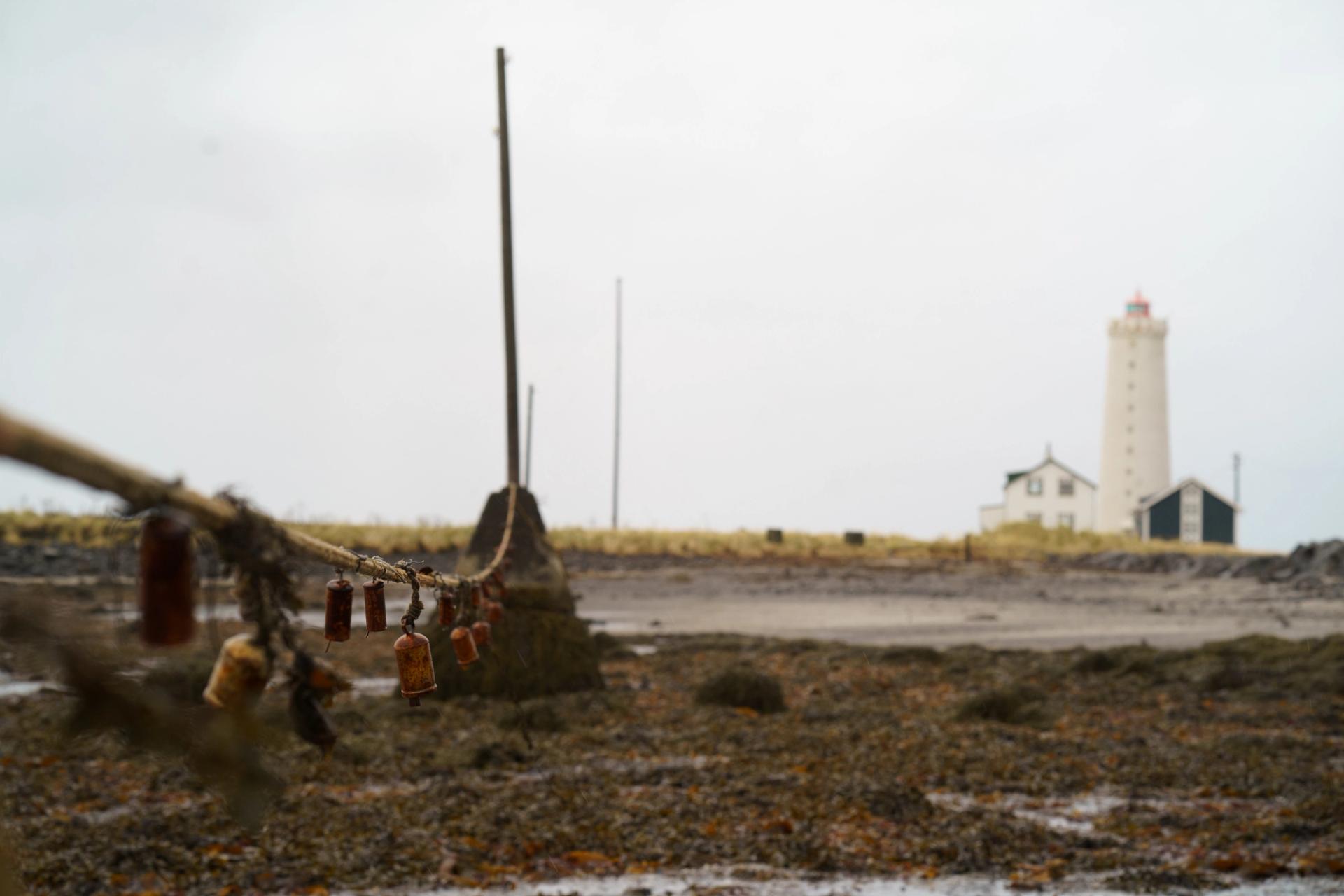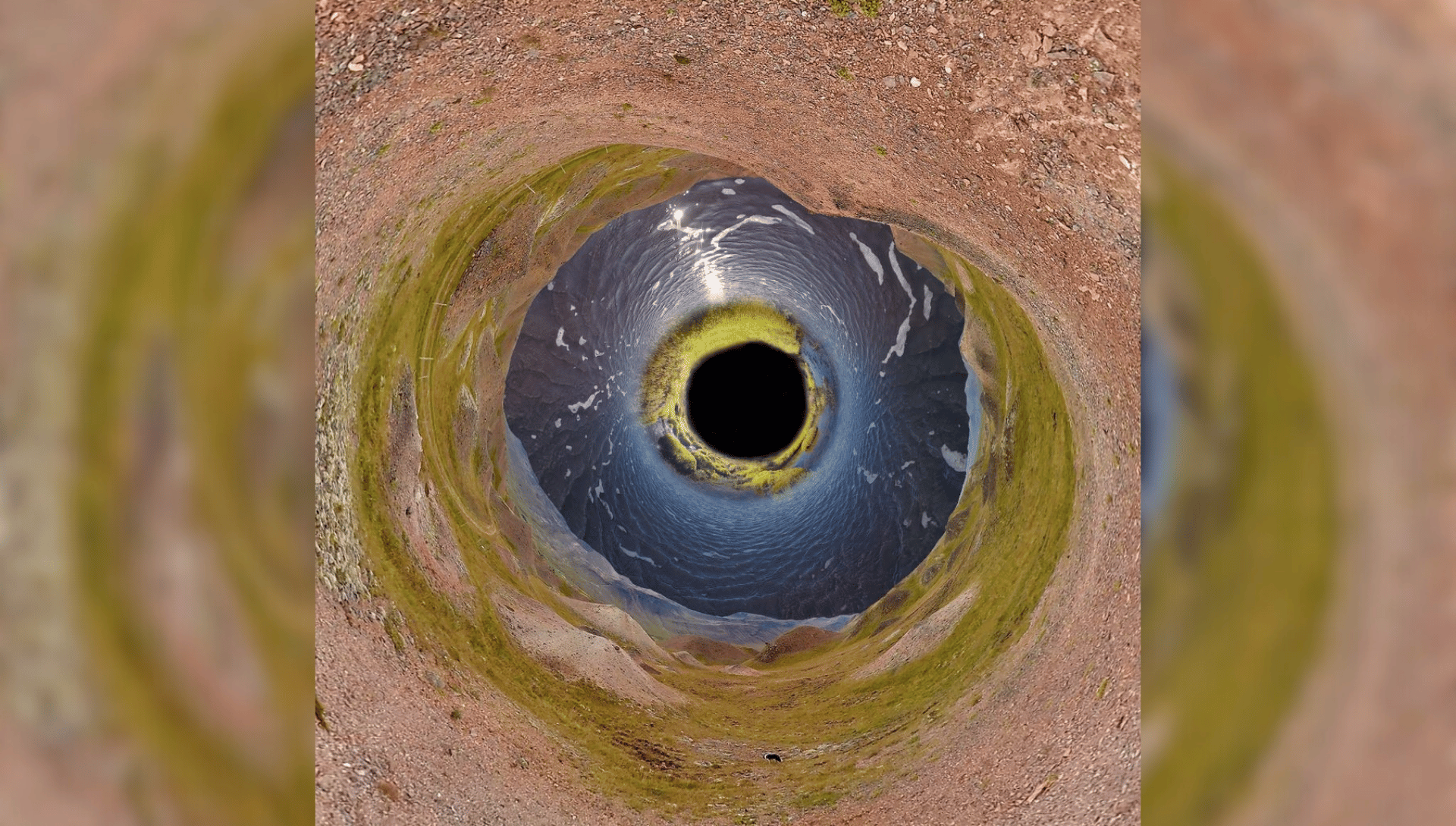As the Fagradalsfjall volcano threatens Iceland, an art biennial in Reykjavik explores societal collapse

Sequences, the Icelandic art biennial, opened in Reykjavik for its 11th edition in the weeks before a ‘swarm’ of earthquakes rocked the distant island at the top of the world.
The biennial continues to be on show as the Fagradalsfjall volcano, around 25 miles from Reykjavik, threatens to erupt—and cover the capital in toxic fumes or burning ash.
Sequences, then, feels almost apocryphal, for the varied works on show explore, with nuance, keenness and audacity, the poised state of this isolated and fascinating place.
This edition of the biennial, which closes this weekend, is titled Can’t See. Befitting its backdrop, the new commissions here are engaged in the subject of ecological disaster. The title is astute; as with the unknown movements and pressures deep within Fagradalsfjall, we, as a civilisation, often cannot see or comprehend the very things that can influence the outcome of our lives.
“It starts from the feeling that the world is crumbling in our hands,” say the biennial’s curators in an opening statement.
The biennial is curated by an arts collective working out of the Estonian Centre for Contemporary Art. The curators—Marika Agu, Maria Arusoo, Kaarin Kivirähk, and Sten Ojavee—have divided the biennial into four thematic chapters, titled Subterranean, Soil, Water, and Metaphysical.

An installation view of “Soil” at Kling and Bang Photo: Maria Luiga
Biennials are often awash with pressing works hoping to call attention to nature’s demise. Often such works can suffer from being too literal, without the tensions and turmoils that make great art.
But Sequences does not suffer in this way. We are confronted with mythic birds, ancient trees, strange and unpredictable bacteria, unseen creatures from the depths of the ocean. Creatures which once teemed in Iceland but are now extinct are invoked in sculpture and video. Here, contemporary art seems to act like a form of mythological resurrection.
Much of the work on show is connected to an ancient lore that seems, in ways almost impossible to understand for an outsider, to still exert a daily influence on today’s society. Icelanders often refer to the sagas—stories written for children in the ninth, tenth, and early 11th centuries, during the Norse settlement of Iceland when many of the islanders lived in turf huts.
Throughout the life span of Sequences, Iceland’s identity has changed dramatically. The inaugural edition of the biennial took place in the autumn of 2006. Its second edition, in the late autumn of 2008—15 years ago this month—took place as Iceland plunged into economic free fall.
“God bless Iceland”, is a phrase often referred to today. Iceland is an understated place, not big on full-throated nationalism, but the phrase was invoked on 6 October 2008 by Iceland’s then prime minister, Geir Haarde, as he announced that the country’s three commercial banks defaulted after the government found itself unable to find a way to recapitalise them. The country saw billions wiped from its economy, plunging its government into an extreme debt crisis.
Ever since, Iceland has, out of sheer necessity, embraced tourism with all its might. And it has done so with incredible success; according to Newsweek, in 2016, Iceland attracted approximately seven-times its total population in tourists.
The country has done so, in part, by opening itself up to popular culture, making it, at once, impossibly strange and strangely familiar. Justin Bieber shot a music video at the foot of Skógafoss, a majestic glacial waterfall in the island’s south. Inland, fans of the Alien franchise can find Dettifoss, the waterfall used in the opening scene of Ridley Scott’s Prometheus (2012). The alien vistas in Christopher Nolan’s Interstellar were shot on a nearby tundra. The Star Wars, Batman and Marvel franchises have all shot here. Game of Thrones used Iceland’s landscapes extensively. And much of David Attenborough’s nature documentaries were also filmed in the country’s western isles, a craggy paradise for birds.
Sequences’s use of venues across Reykjavik in part reflects on this. Exhibitions are hosted in the Grótta Island Lighthouse, which warns passing boats of the craggy coastline that surrounds Reykjavik. Art is shown in the basement of a library in the National Gallery of Art and in galleries situated in a renovated former herring factory, in a still working harbour in the industrial outskirts of the city. But venues also include the Edition hotel, a new 5-star hotel chain with a sky bar from where, with ice tinkling in cocktail glasses, one can watch the boats taking tourists out to photograph whales.

Precious Okoyomon and Dozi Khanu’s bells installation at Grótta Lighthouse Photo: Vikram Pradhan
Close to the Edition hotel, one can find guided tours of known elf sites. Which leads to the question of how much folklore surrounding the Huldufólk has been commodified for tourists eager for some magic in their lives.
The work of Hildigunnur Birgisdóttir, Iceland’s chosen representative at the Venice Biennale next year, and a former curator of Sequences, confronts this question fairly directly in her work. But it is also refracted through various bodies of work at this year’s edition of the festival.
Then there is the richness of Icelandic culture itself, which can be understood through the meteorology of the country. The winters here are long, dark, rainy, windy and cold. In the depths of winter, Reykjavik has maybe two hours of daylight; even then, this little window of light comes with lashing rain and wind strong enough to knock you from your feet. In the east, many Icelandic communities live for weeks or months without sunlight. How do they respond to this enforced annual lockdown? For many Icelanders, and the numerous immigrants who call Iceland their home (for this is a deceptively multi-cultural place), they stay inside and determinedly create.
In a recent census in Iceland, 25% of the country’s population wrote ‘artist’ when asked their primary occupation. Speaking anecdotally, most people here will describe themselves as an artist or poet or painter or musician, even if they spend their days fishing.
There is, then, an ingrained culture of creativity which comes to the fore in the summer and early autumn months, during which Reykjavik is awash with performances, exhibitions, readings and festivals, as people from all generations and strata of society display what they have worked on when sheltering from the weather.
Among the highlights of the biennial this year is a video work by Hrund Atladóttir, Black Whole (2023), a deep, dark stare into the geological centre of the island, and Brák Jónsdóttir, an emerging voice in the country’s art scene, has created sculptures that reimagined the jellyfish-like creatures said to once populate Iceland, but are now extinct.

Hrund Atladóttir, Black Whole (2023) Photo: Hrund Atladóttir
Then there’s the video work of Emilija Škarnulytė, titled Sirenomelia (2017), in which the artist, depicting herself as a mermaid, dives through the ruins of an abandoned submarine base in the freezing waters off the coast of Norway, once used by Nato allies during the Cold War.
Then there is the work of Anna Líndal and Þorgerður Ólafsdóttir, two artists who, in 2017, managed to get themselves on a scientific exhibition to the strictly prohibited volcanic island of Surtsey. There, the scientists drilled through basalt rock, finding, 200-feet deep within the island, microscopic organisms of the sort never encountered by humans before.
The project, titled Mapping Underwater Microbial Colonization, and newly commissioned for the festival, allows us to understand how these invisible and strange creatures behave.
The biennial has mixed these new commissions with reinterpretations of works from the country’s museums, including, most notable, landscape paintings by Jóhannes Kjarval in the Reykjavík Art Museum Kjarvalsstaðir.
Kjarval is a figurehead of 20th-century Icelandic art. Born into rural poverty, he spent his early adulthood working as a fisherman, painting in his spare time. On his first trip out of Iceland, to London in 1911, he saw the works of J. M. W. Turner and William Blake at the National Gallery. The experience pushed him to leave his rural Icelandic life behind to study art at the Royal Danish Academy of Fine Arts on a scholarship. He grew to become Iceland’s most revered Modern artist.
It is remarkable how much his work melds with the biennial’s new commissions, each a testament to a place both sedate and extreme, wild and welcoming, constantly asking you to find words or images that might serve to unify its paradoxes.
Source link





